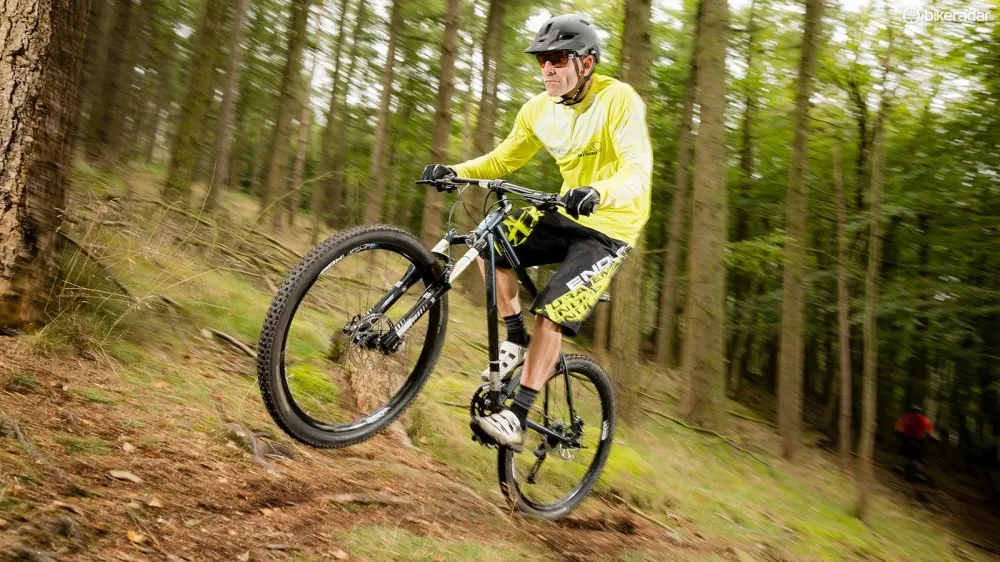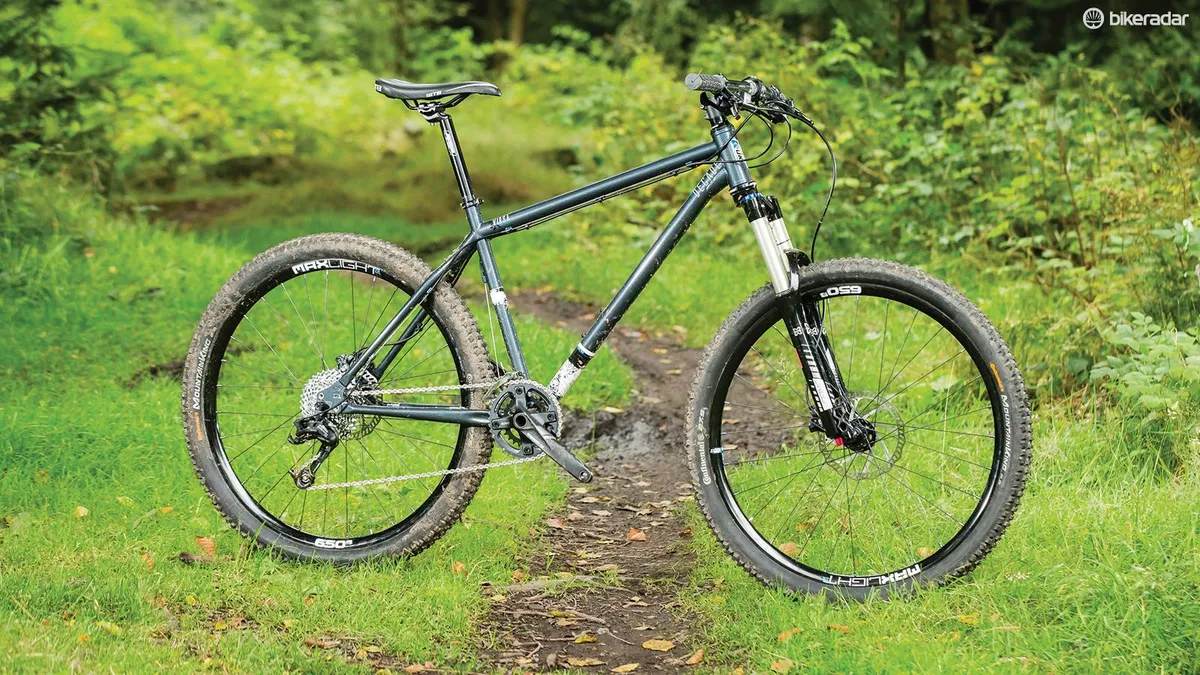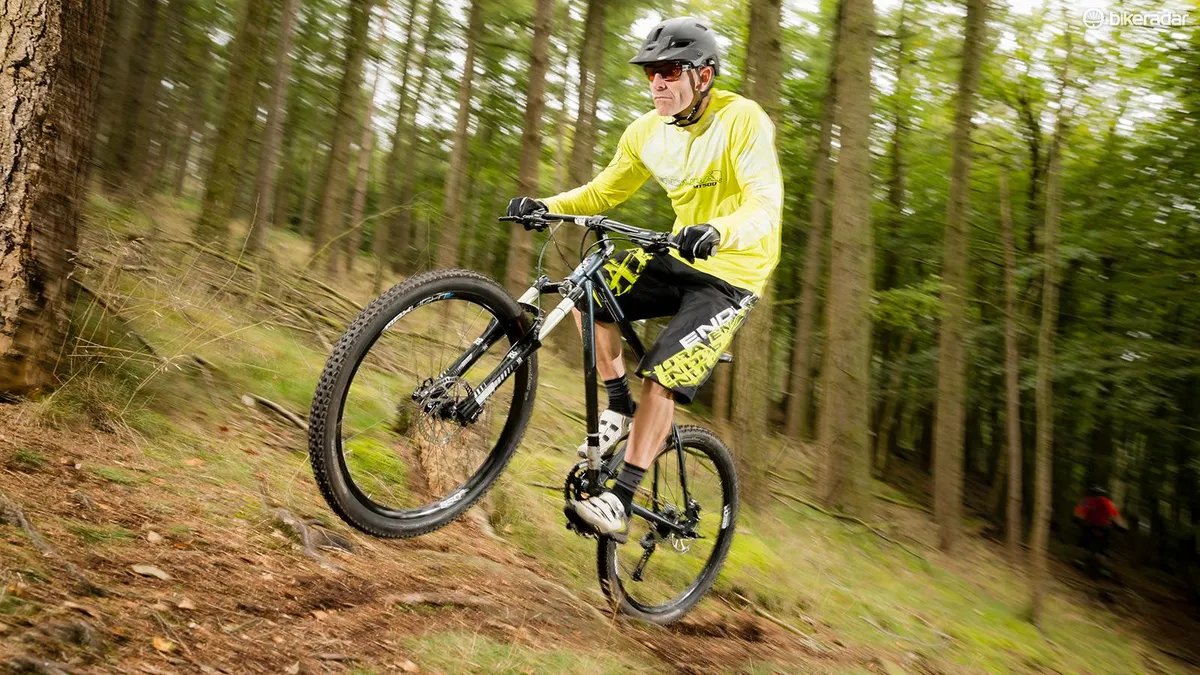The Kinesis range has always been a go-to for cost-effective frames and the brand's steel Decade VIRSA is no exception. The complete bike package doesn’t really do the chassis justice though.
Sorted steel tubes
If you’ve been in the biking game for a couple of decades you’ll recognise the Tange Prestige name and this latest ‘Japan’ version is a top-quality double-butted steel tubeset. Kinesis has used it to create a versatile frame that’ll stand the test of time too.
The ring-reinforced 44mm head tube can take a tapered fork, and the closed triangular box gusset behind the head tube and the relatively big top and down tubes (31mm and 38mm in diameter, respectively) mean the frame can cope with 130mm (5.1in) travel forks without worry.
At the far end, switchable ‘Swopout’ dropouts from Upgrade Bikes stablemates DMR allow any sort of rear axle configuration. Our sample came with a fixed-lever 142x12mm axle but there’s even a horizontal dropout option that combines with the slotted sliding brake mounts for easy singlespeed conversion. Dented, tapered stays just about give room for a muddy 2.3in tyre and the wishbone seatstays are a classic steel bike design feature.
The 27.2mm seat tube limits dropper post choices but the lack of seat tube bottle mounts means you can slam a conventional post if you need to. Three colours are available and at £349.99 for such a high quality, versatile frame it’s a bargain.
Some compromised kit
There are some really good own-brand kit highlights in this fixed-spec package too. The Maxlight IX wheels are light and lively with tubeless-ready rims of a reasonable width, creating a great rolling chassis with the Decade VIRSA frame. The Kinesis Strut carbon flat bar is one of our favourite trail/XC bars too, with a really comfy feel and very low weight for under £100.

The Decade VIRSA’s high-quality steel frame delivers a noticeably responsive but impact-skimming ride
The X-Fusion Sweep fork is a solidly predictable performer with loads of midstroke support and steering precision. The 140mm (5.5in) stroke lifts the front end right up though, taking the bottom bracket sky high with it and slackening the seat tube back past 70 degrees. That meant we dropped travel to 120mm (4.7in) after we’d photographed the bike to create a better synced ride, but we’d be tempted to go as short as 100mm (3.9in) to get a more centred rather than rearward weight distribution.
The easily punctured and floppy-when-soft Continental tyres and wooden, low-powered Tektro Draco 2 brakes do the overall confidence of the bike no favours either. SRAM X5 is nowhere near as long-lived as the Shimano Deore/SLX alternative, and that can start becoming obvious through the shifters in just a few weeks if you don’t keep on top of cable maintenance. You’ll need to crank the single-bolt FSA seatpost up super-tight too.
Ripping ride – if you tweak the build
It didn’t take long to establish that the VIRSA’s build kit wasn’t doing it any favours and we’d struggle to recommend the complete bike. Thankfully the frame is available separately for £349.99, and after some key component changes we’re happy to say there’s a good heart beating at the centre of the bike.
While the main tubes are large in diameter there’s no doubt that you’re not riding a more rigid alloy bike or a more damped composite frame. The zing and ping of steel might be a cliché, but it’s one that describes the way the Decade VIRSA skims and springs down the trail perfectly.
The 650b wheels skip and skim more than 29in hoops but they accelerate and change direction noticeably faster too. There’s still enough meat in the frame to get your muscle power through to the wheels largely intact and the Kinesis squirts infectiously out of corners and gains speed at every opportunity. It’s similarly well connected at the front end too, with precise, predictable traction as far as the Continentals allow, as long as you hover out of the saddle to get your weight forward.
If you’re planning to spec your own build up, it’s worth noting that the handling syncs better with the resilient but rapid ride character the more you drop the front end. The relatively short top tube also makes it a natural home for a longer stem and narrower bar rather than a short and wide enduro-style set-up.



